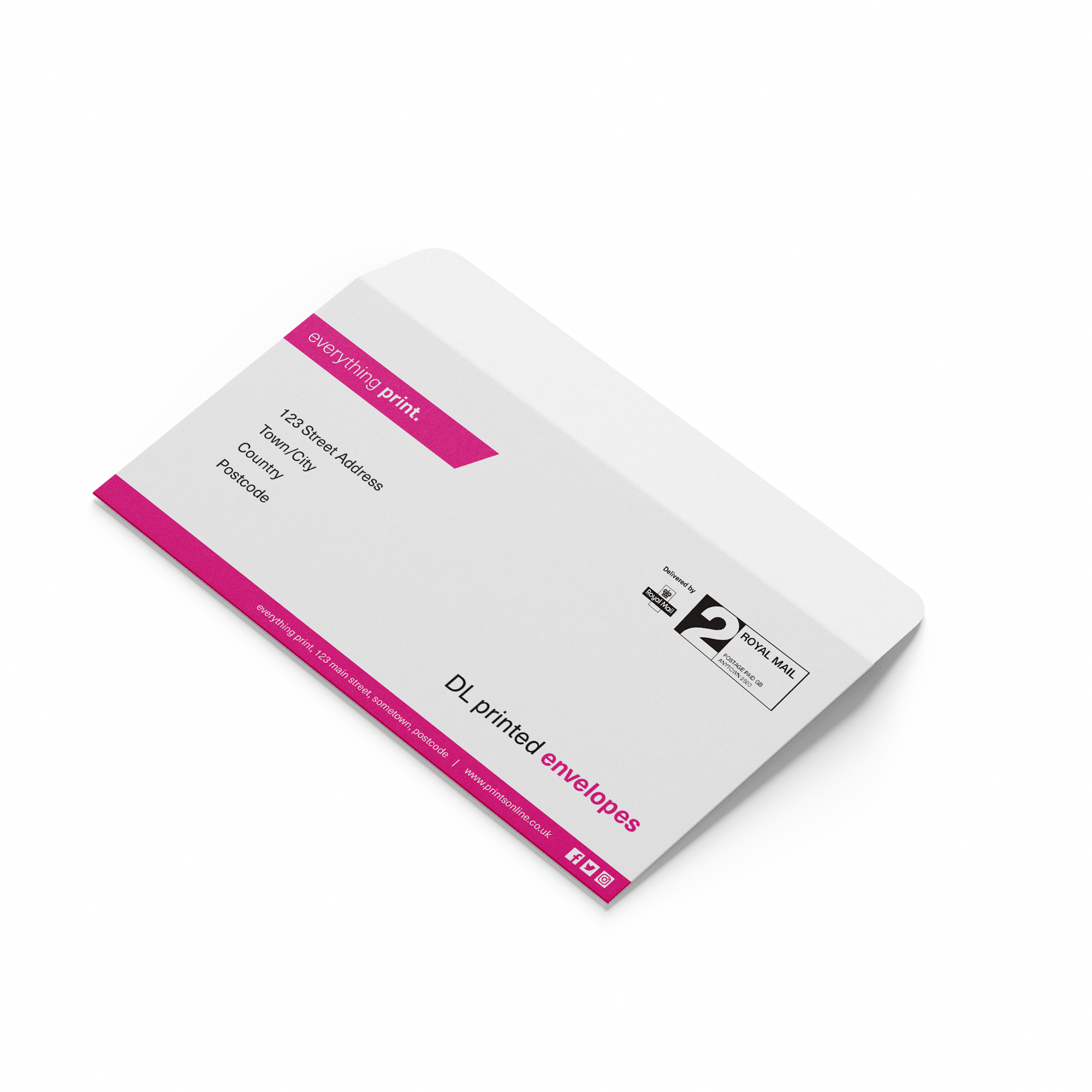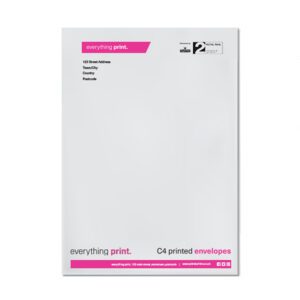DL Envelope
Printed DL envelopes available in a range of colours and paper types. Contact us for samples.
Full Description
DL – 110mm x 210mm – A4 folded twice to 1/3 A4
Envelope Styles and Types
- Banker – the traditional diamond flap envelope ideal for invitations and greetings cards
- Wallet – opening on the long edge ideal for corporate letterheads
- Pocket – opening on the short edge, most common on envelopes larger than DL
- Window – a clear acetate that covers an aperture to reveal details, usually a name and address
- Board Back – a stiff board is used to protect the contents from being bent or creased when in transit
- Gusset – folded sides that can expand to accommodate bulkier items
- Air Padded Bags – the body of the envelope is made from paper and plastic comprising of bubbles that act as air pockets to provide protection and security.
- Poly Bags – a clear polythene bag that is transparent to reveal the contents.
Envelope Sealing
The three most common types of envelope sealing are:
- Gummed – a small layer of dry adhesive that when moistened re-activates the glue for sticking. These were the first type of envelope to carry their own sealing mechanism and whilst not the most pleasant to use if licking yourself they are used for direct mail when using automatic enclosing machines. It is possible to steam open but generally speaking they are a relatively secure method of sealing an envelope. They can be stored for a fair amount of time before the glue discolours or becomes unusable.
- Self Seal – the most common envelope used today. Two layers of adhesive are used, one on each edge of the opening that when pressed together form an instant tight seal. They are quick and easy to use and although they can be re-opened which could potentially be a security issue they economical and widely used. The seal strength can begin to weaken in a relatively short space of time so it is not recommended to store this type of envelope for more than 6 months.
- Peel & Seal or Strip Seal – perhaps the easiest and quickest sealing method. A thin peel away strip of paper on the edge of the flap reveals a layer of adhesive that when press down forms an instant strong seal. These envelopes can be expensive but will store for a very long time without deterioration and once opened cannot be resealed making them very secure.



